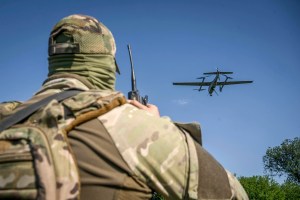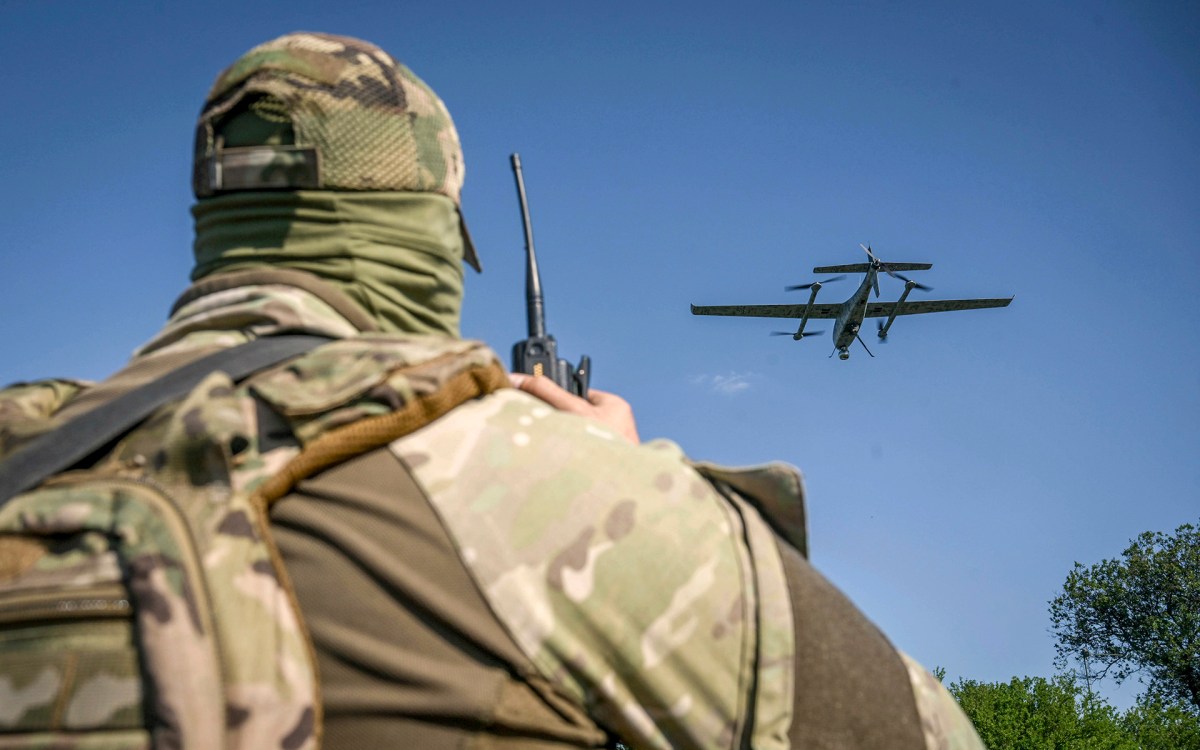Terror war could strain veterans’ health, benefit systems
U.S. unprepared for impact of returning soldiers, KSG researcher says
The cost of caring for veterans of the war on terror could reach $662 billion over the next 40 years, while demand from returning soldiers is already clogging the two major veterans’ assistance programs, according to recent research by Linda J. Bilmes, a lecturer in public policy from Harvard’s John F. Kennedy School of Government.
Bilmes, the former chief financial officer and assistant secretary of the U.S. Commerce Department, said the ongoing cost of providing medical care and disability benefits for returning Iraq and Afghanistan war veterans is a cost of the war on terror that the Bush administration hasn’t adequately prepared for.
Even in a best-case scenario, the long-term costs of providing disability benefits and medical care for returning veterans of the war on terror will reach $350 billion over 40 years, Bilmes’ research shows.
Bilmes presented her study, “Soldiers Returning from Iraq and Afghanistan: The Long-Term Costs of Providing Veterans Medical Care and Disability Benefits,” Jan. 5 at the annual meeting of the Allied Social Sciences Association in Chicago.
One of the driving factors in the high postwar costs is that far more soldiers are surviving injuries that would have killed them in earlier conflicts. According to the data from the Department of Veterans Affairs, there are 16 “nonmortally wounded” soldiers for every battlefield death, a number that dwarfs the 2.6 wounded per death in Vietnam, and the fewer than two wounded per death in World War I and II. Other factors driving costs include the large numbers of solders who do not fall into the “wounded” category, but who will be eligible for disability payments because of other medical problems, such as mental health conditions.
While the larger numbers of survivors – reflecting improvements in medical care and protective gear – is good news, it also leaves a larger legacy of the war to contend with after the fighting stops.
The costs come from two major programs available to returning soldiers. The first is a cash disability payment administered by the Veterans Benefits Administration. Payment varies according to the level of disability of the veteran, from $1,304 per year for those with a 10 percent disability, up to $44,000 annually for those fully disabled. Bilmes projects disability payments at between $67.63 billion and $126.76 billion over the next 40 years, depending on how long the war lasts and how many additional military personnel are called to action. The estimates are based on a key assumption, that 44 percent of veterans – the same percentage as in the first Gulf War – eventually claim disability.
More expensive will be the cost of providing medical care to returning veterans, her research shows. The second major benefit for veterans is care at the nation’s system of veterans’ hospitals and clinics run by the Veterans Health Administration.
Veterans are entitled to free medical care for two years after returning from duty and then can continue to obtain care by paying a co-payment prorated according to the veteran’s level of disability.
Depending on the number of troops that wind up serving in the war on terror, Bilmes calculated the cost of providing ongoing care for returning veterans suffering physical or mental disabilities at between $282 billion and $536 billion. Again, she assumed Iraq and Afghanistan veterans would utilize the medical care system at the same rate as in the first Gulf War, or 50 percent.
“It’s another entitlement. It’s like a mini-Medicare,” Bilmes said.
Compounding the projected high cost of caring for returned veterans, Bilmes said, is the fact that their sheer numbers are already overwhelming the system.
The backlog of applications for disability payments has risen from 69,000 in 2000 to 400,000 today, while the time it takes to process an initial claim averages six months. Appeals can take up to two years. That delay leaves some veterans without financial support during the critical first months after returning to civilian life.
“It’s a very critical time for active duty people who’ve been in hellish conditions, particularly for reservists and guardsmen who [have returned to civilian life] and are not in the military family anymore,” Bilmes said.
In addition, the demand for medical treatment at VA medical facilities has grown, creating waiting lists long enough, according to one VA official Bilmes cites, to effectively deny treatment to some veterans.
Compared with the cost of waging the Iraq war, Bilmes said, fixing the backlog would be inexpensive.
Bilmes suggested looking to private industry for solutions. Private health insurance companies process claims in an average of 89.5 days. She also suggested either a “fast track” system set up specifically for Iraqi and Afghan war veterans to ensure their benefits aren’t delayed, or doing away with a the initial processing entirely. This could be accomplished by adopting the IRS’s model for tax returns, accepting all disability benefits applications and then conducting audits to ensure compliance and root out fraud.
More money will be needed to improve performance on the medical care side, reduce waiting lists, and provide the services needed by returning veterans, Bilmes said. She suggested funding additional social workers at the 207 smaller, walk-in Vet Centers to handle some of the mental health-related needs and ease the pressure on larger VA hospitals.
“People are sobered by the scale of it, but compared with other things going on it is more fixable,” Bilmes said.




